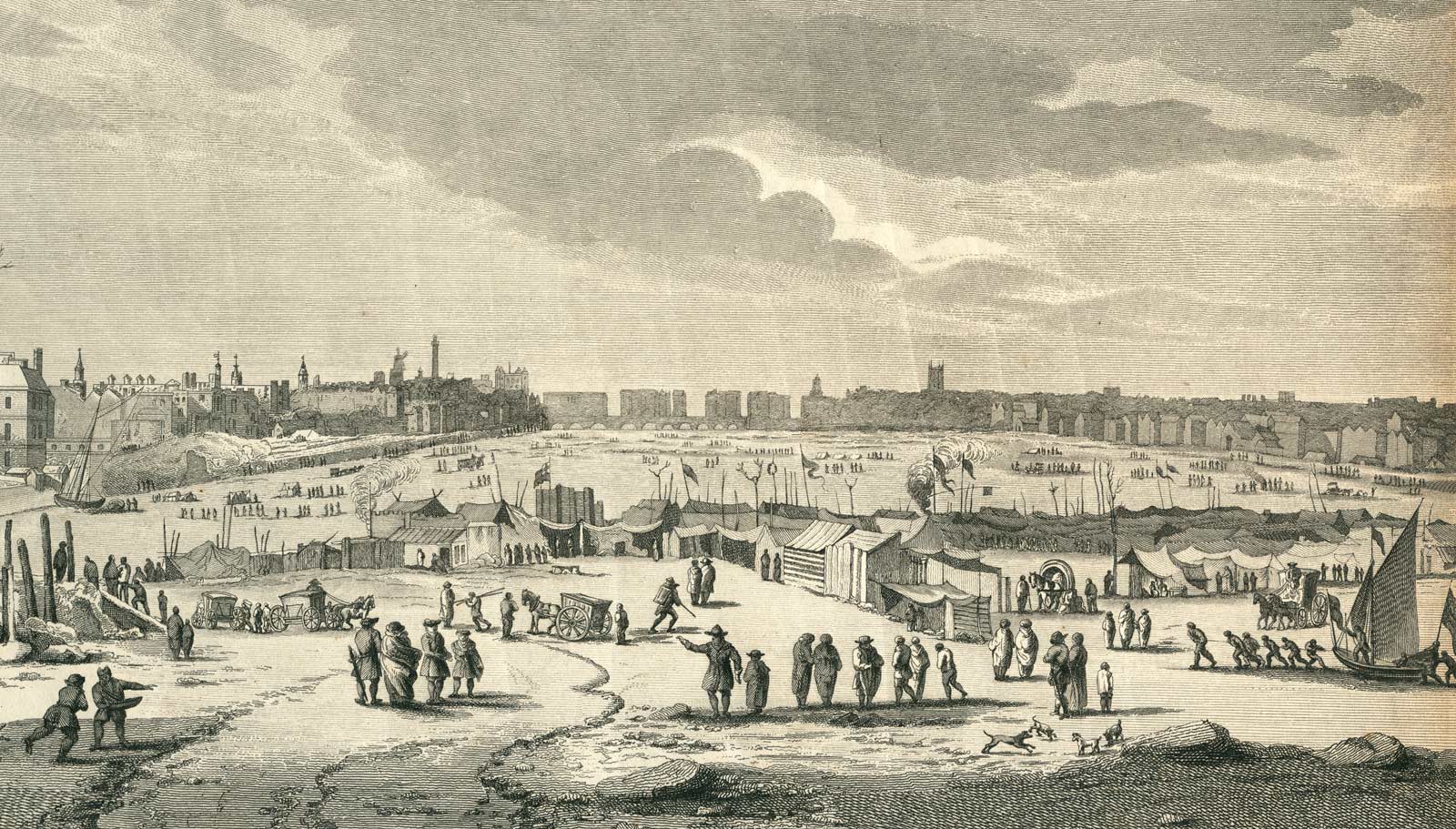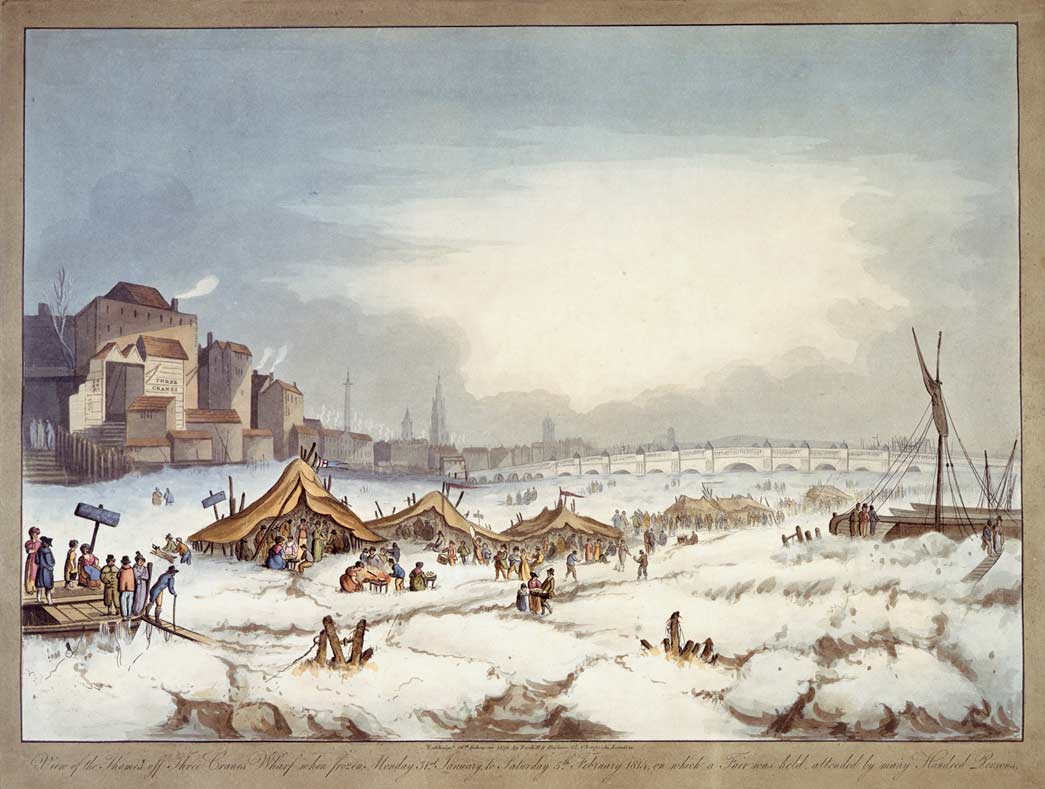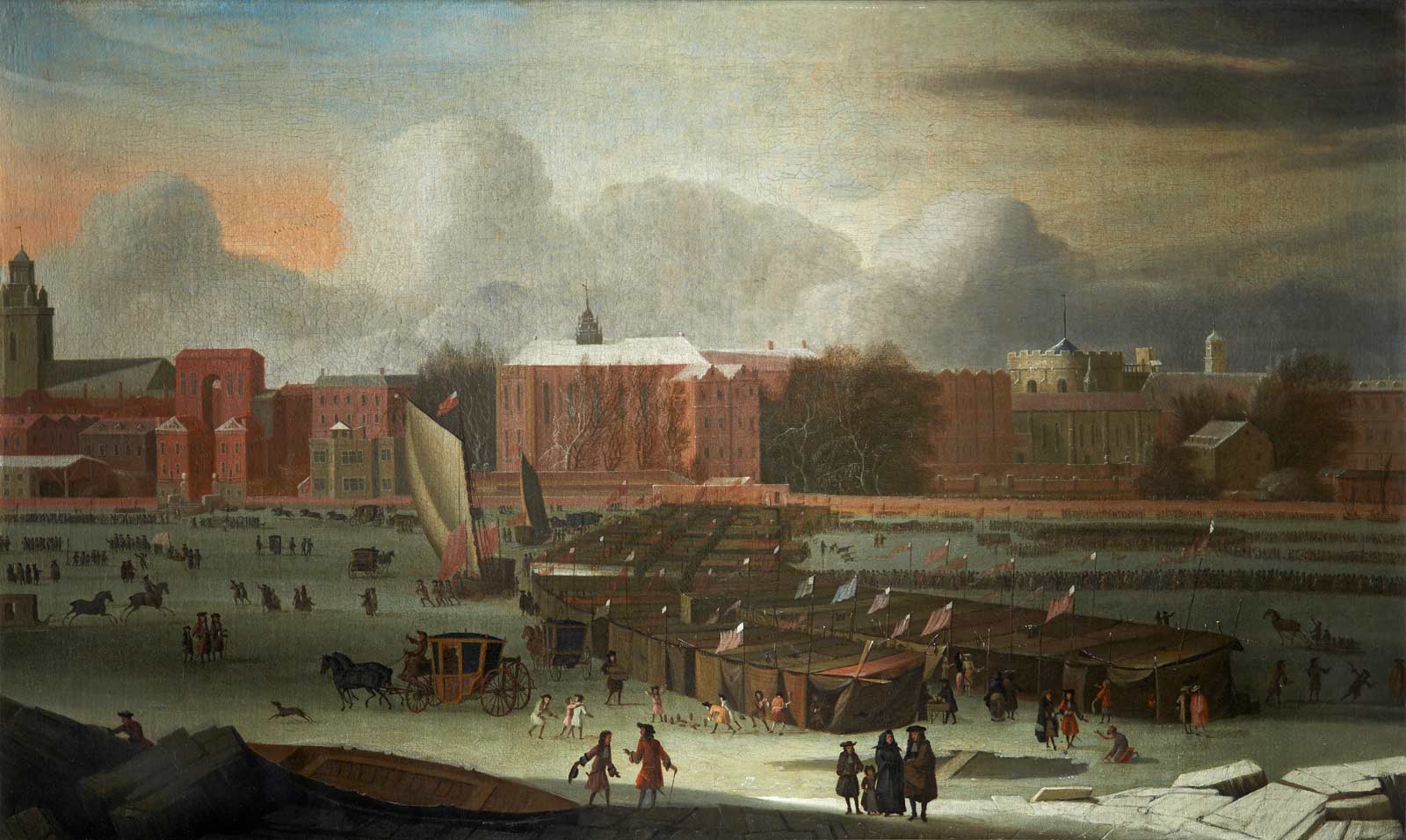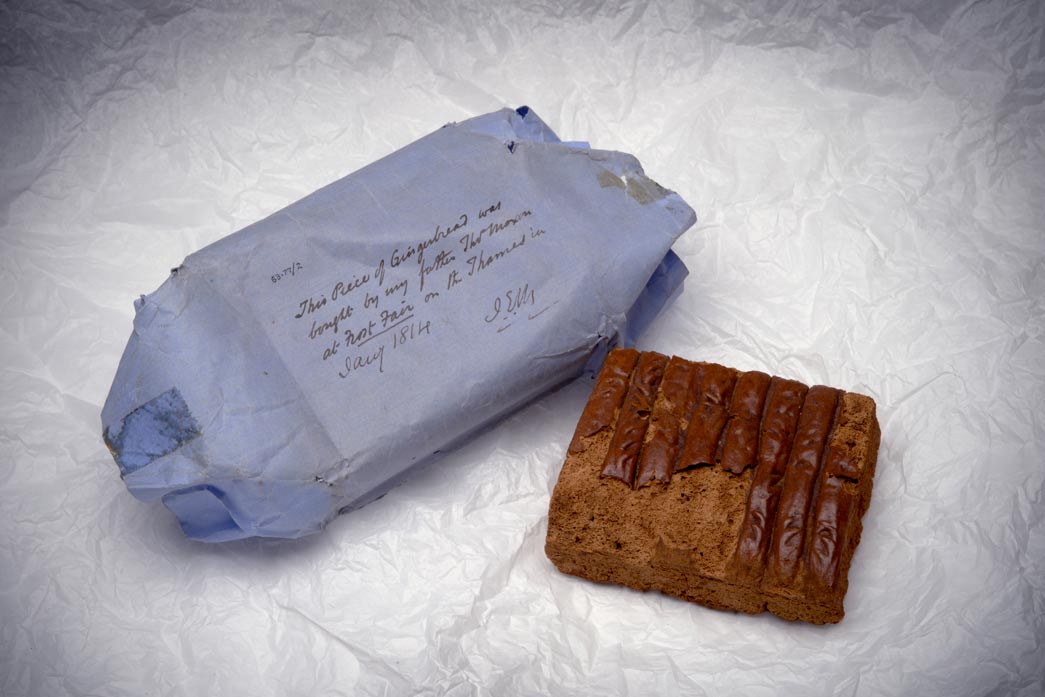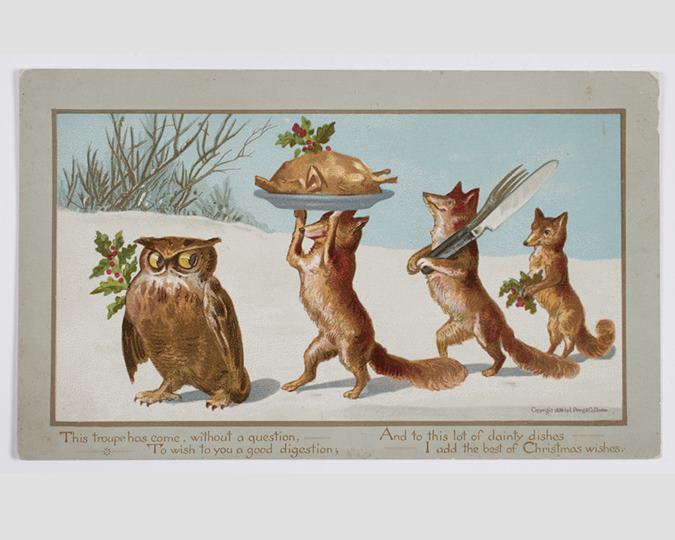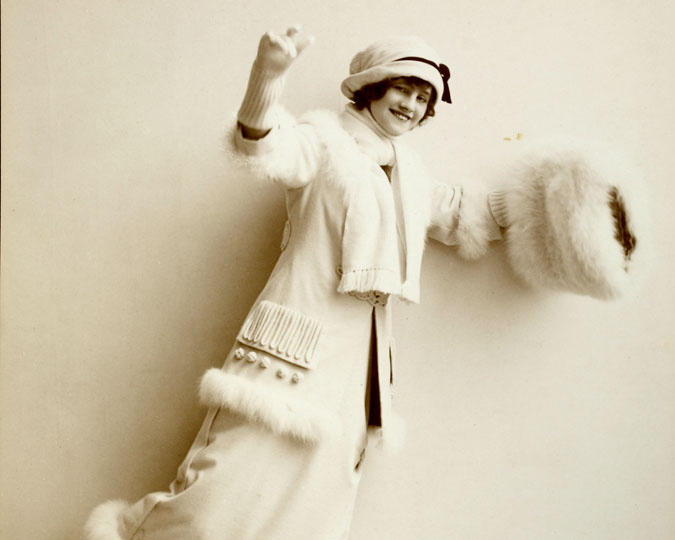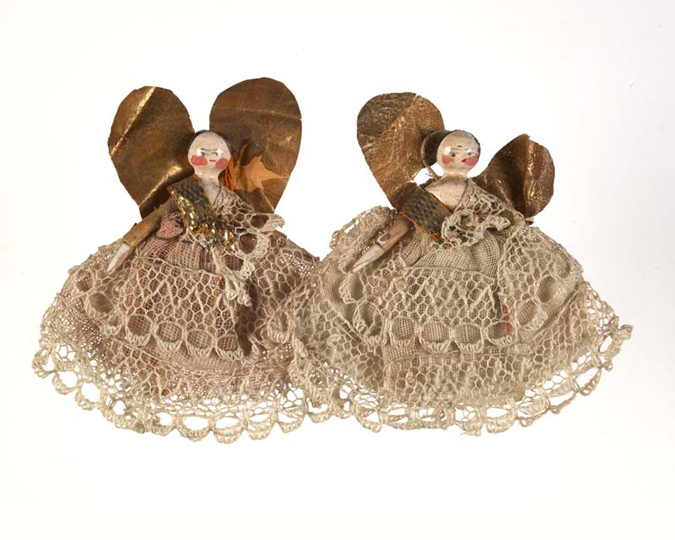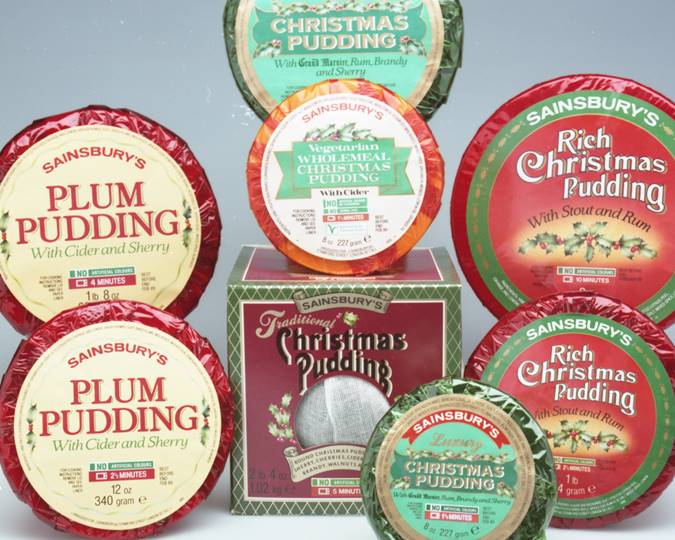Winter wonderland on the Thames? From Stuart London until 1814, the surface of the river froze over twenty-four times. Londoners marked some of these occasions with Frost Fairs, building markets, playing games and cooking meat on the icy surface of the river. Let's look at some of the most famous Frost Fairs through the Museum of London's collections.
Why did the Thames freeze?
The Thames was not the river we know today: it was much wider and shallower, and had not yet been contained within stone embankments. Its depth, and the fact that it flowed much more slowly meant that it was easier for the water to freeze. There was another important factor separating the river from the modern Thames, which you can see in the background of many of these contemporary images of Frost Fairs. This was Old London Bridge, built on nineteen arches supported by small piers with projecting "starlings", which broke up the flow of the river. In winter, when these arches were blocked with ice and debris, London Bridge almost acted like a dam, slowing the Thames and helping it to freeze.
Cold winters were also much more common in London during this period. From 1300 until 1870, the Earth experienced very low temperatures due to a natural occurrence named “the Little Ice Age”. This was mainly due to a period of geological climate change combined with volcanic eruptions, and with very low sunspot activity.
The “Little Ice Age” phenomenon caused many consequences that affected everyday life for Londoners. In the worst freezes, like that of 1683-84, lakes, rivers and part of the sea around the southern coasts of England all froze. The fact was so exceptional that it was reported in the London Gazette newspaper dated 31 January 1684, in particular because it brought to a halt all the commerce on the water, especially on the river Thames. This was London's main form of travel and transportation. With the Thames at a standstill, hundreds of bargemen and sailors were frozen out of work. Frost fairs offered a chance for them to earn money by guiding sight-seers out onto the ice. Others fitted their small boats with runners, turning them into sledges, and offered rides along the frozen river.
When was the first Frost Fair?
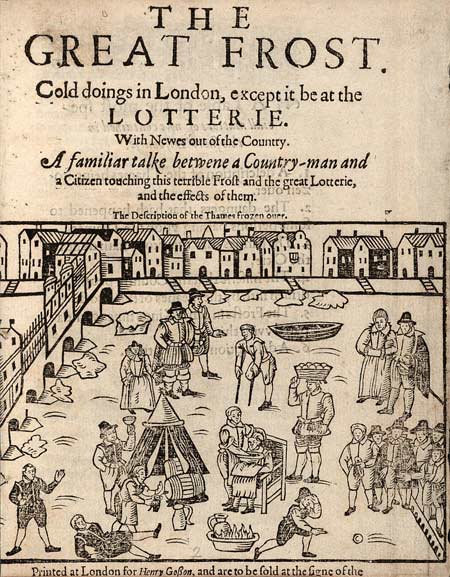
The Great Frost, 1608
Pamplet documenting the first record frost fair in London. Public domain.
In 1608, the Thames froze for six weeks, and we have the first officially documented Frost Fair. It is reported in an extremely rare pamphlet printed for the occasion allegedly authored by Thomas Dekker, the famous Elizabethan pamphleteer. Titled: “The great frost. Cold doings in London, except it be at the Lotterie. With Newes out of the Country. A familiar talk Betwene a Country-man and a citizen touching this terrible frost and the great Lotterie, and the effects of them.”
The pamphlet is written as a conversation between a man from the countryside and another from London. Mainly they discuss how they are coping with the cold; in particular the Londoner details his unusual experience of “being shaved in the middle of the frozen Thames: an experience to be remembered in the afterlife!”.
What could you buy at a Frost Fair?
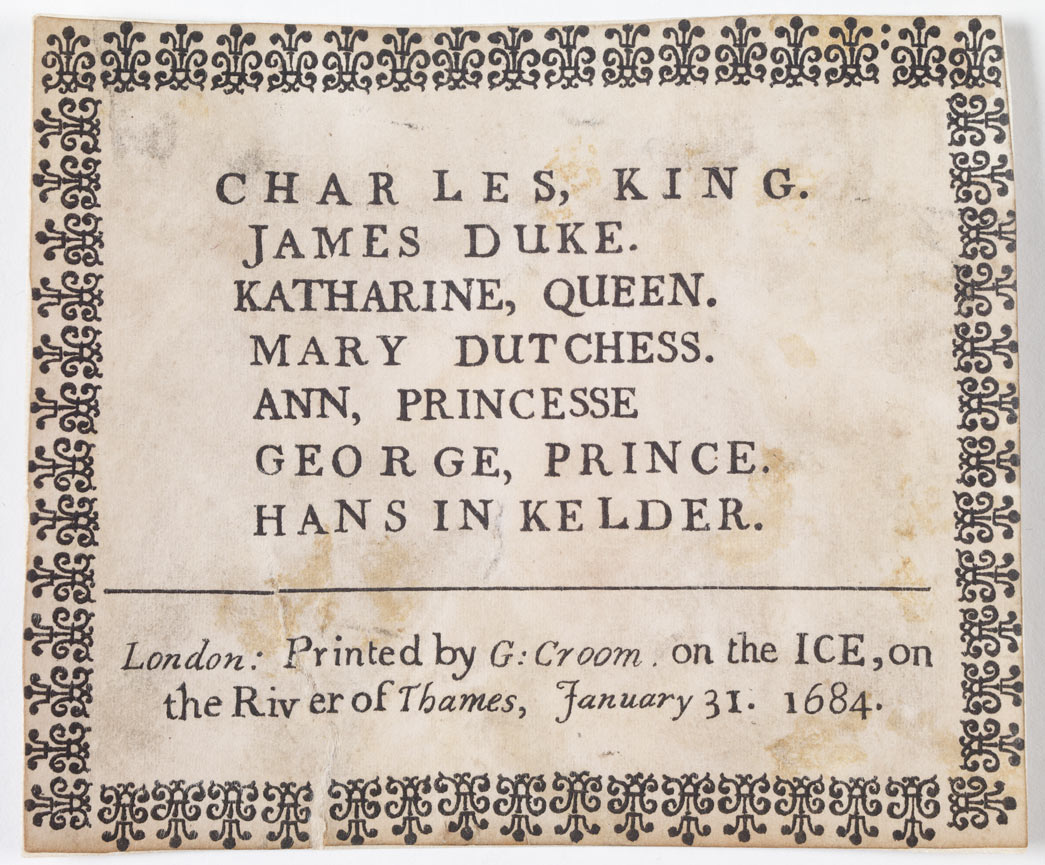
Frost Fair ticket commemorating King Charles II's visit
'Charles, King. James Duke. Katharine, Queen. Mary Dutchess. Ann, Princesse. George, Prince. Hans In Kelder; London: Printed by G Groom on the ICE, on the River of Thames, January 31 1684'.
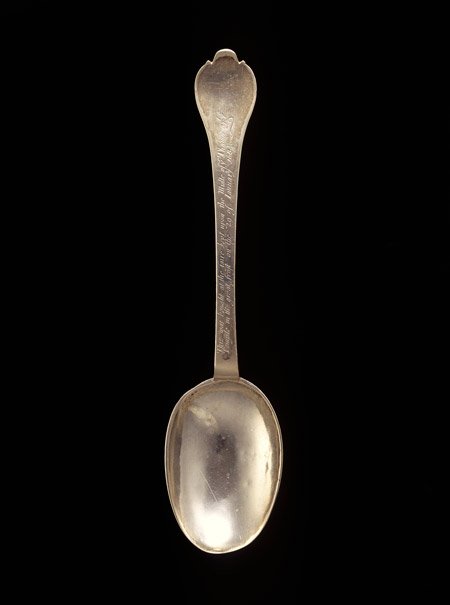
Frost fair souvenir silver spoon: c. 1684
Inscribed 'This was bought at the faire kept upon the Midle of ye Thames against ye Temple in the great frost on the 29 of January 1683/4'.
The traders who set up on the ice sold many items which visitors could buy as a souvenir of their extraordinary visit to a Frost Fair. Printers would print and sell "tickets" to Frost Fairs, personalising them with the names of customers.
Here's an amazing item from the 1683-84 Frost Fair, now in the Museum of London's collection: a ticket printed on the ice for Charles II and his court, when they visited the fair on 31 January 1684. Imagine: the king folded this ticket and put it in his pocket and now it is here for us in the 21st century!
During the same Frost Fair you could have also bought a silver spoon, dated and engraved to remember you visit; another treasure in the museum's collection.
What did people do at a Frost Fair?
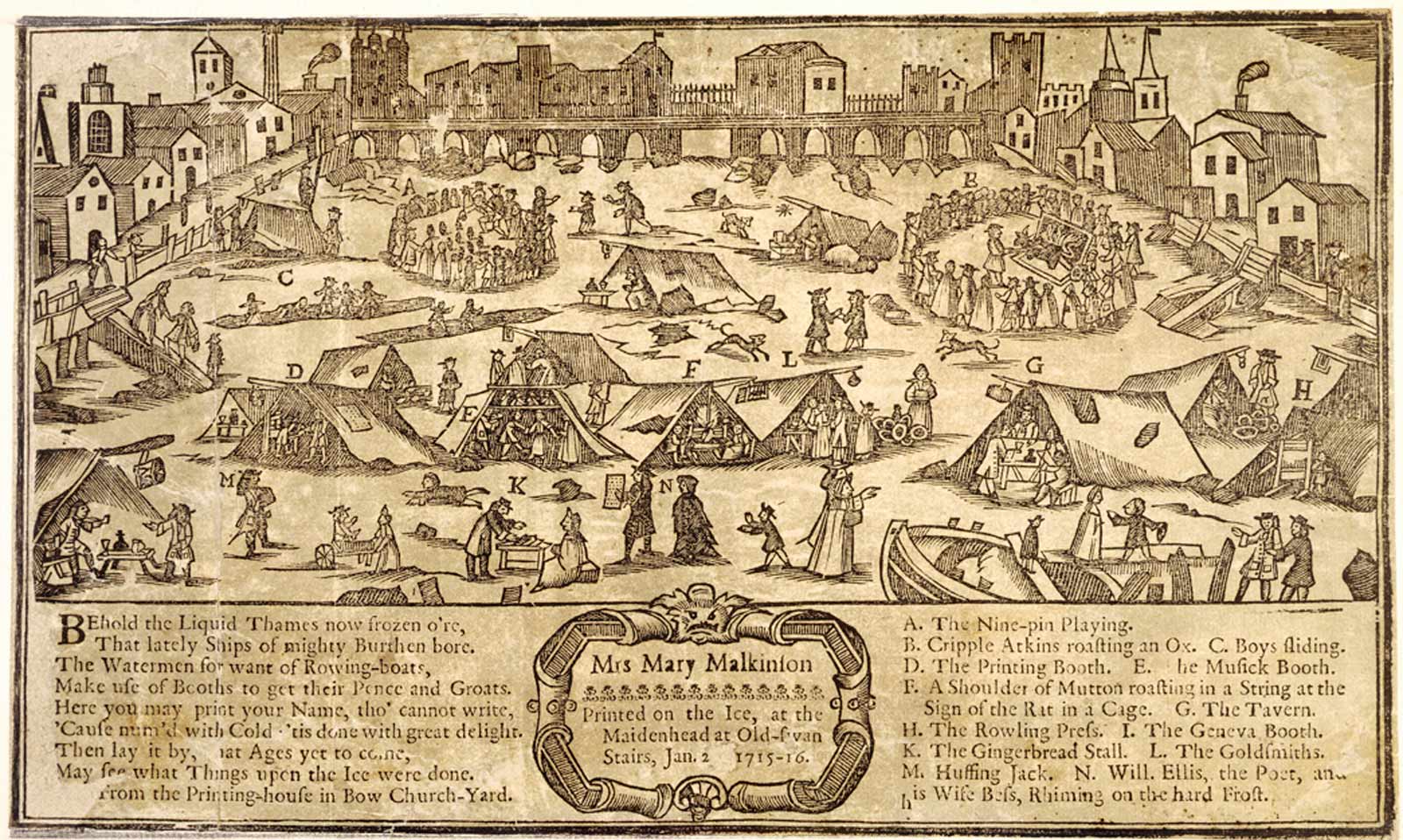
The frost fair on the river Thames in 1715-1716
Woodcut showing the amusements available on the ice.
This wood-cut comes from the next great London Frost Fair, in the winter of 1715-16. Unfortunately we do not have many surviving printed tickets from this fair, despite the spell of cold weather lasting seven weeks. However we do know there was another royal visit as reported by a contemporary font, the Dawks's News-Letter dated 14th January 1716:"...attracted the attention of many of the nobility, and brought the Prince of Wales, to visit Frost Fair."
This woodcut, printed on the ice at the 1716 fair, shows some of the activities they could have done at the fair including playing nine-pins, eating mutton or ox roasted on the ice, sliding on the ice, and buying gingerbread.
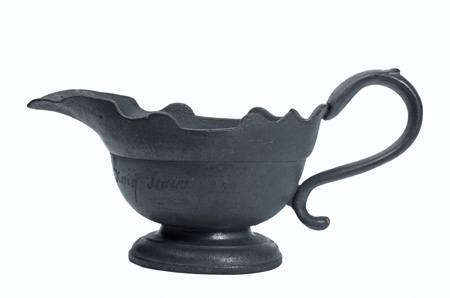
A pewter sauce boat; c. 1740
Pewter sauce boat with a scalloped edge. It is inscribed 'R G Bought on ye Thames at King Stairs 1740'.
For the Frost Fair of 1739-40, together with the usual tickets printed on demand, we find an unusual item in the Museum of London collection: a pewter sauce boat! It was donated to the museum in 1902 and is engraved: “R G Bought on ye Thames at King Stairs 1740”. It is a quite a unique item and the only pewter souvenir amongst the variety of objects sold on the ice that has survived to the present day.
When was the last Frost Fair?
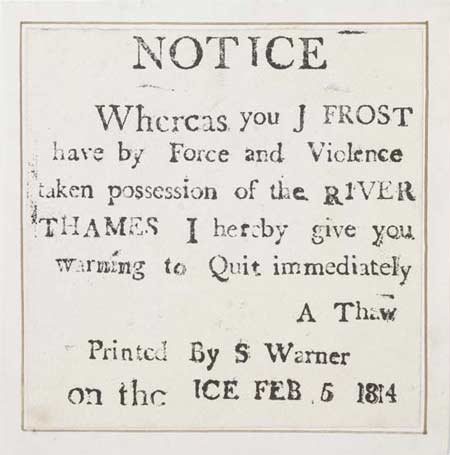
Frost-fair keepsake, 1814
Printed on the frozen river Thames during the winter Frost Fair on 5th February 1814. The keepsake is printed with the message 'Notice Whereas you J Frost have by Force and Violence taken possession of the River Thames I hereby give you warning to Quit immediately A Thaw Printed by S Warner on the ice Feb 5 1814'
The last Frost Fair occurred in 1814. Nobody thought it would be the last one at that time. By now, the Frost Fair was an experience reported in newspapers, depicted in paintings and passed on by word of mouth.
Temperatures were below freezing every night from 27 December 1813 to 7 February 1814. However, it was between 25 January and 1 February 1814 that vast congregations of people started to gather on the ice and set up the stalls marking the official start of the Frost Fair. The crowds were more determined than ever to get a ticket printed on the ice, even though there was not enough time to compose your name. As a consequence it was customary just to have a dated ticket as your memento for the future generations.
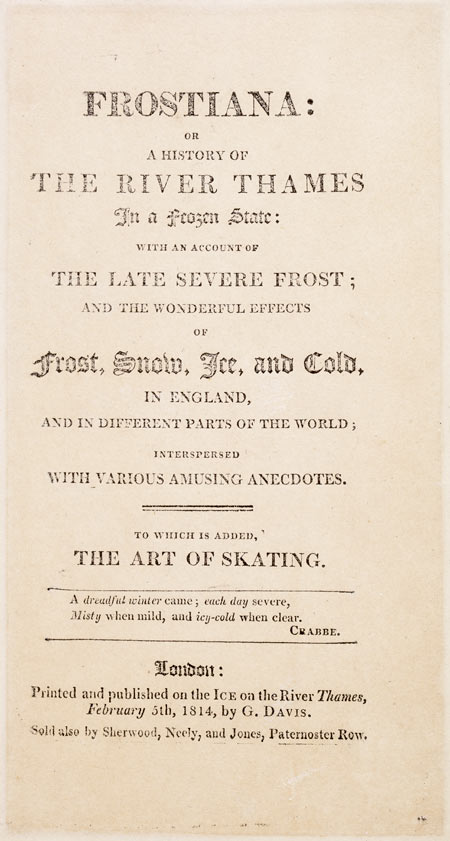
Letterpress frost-fair keepsake printed on the frozen river Thames during the winter Frost Fair on 5 February 1814.
For this fair, we have not one but two amazing items. One of these exceptional survivals is a piece of gingerbread, bought at the fair. This commemorative cake, perhaps actually baked on the ice, is now over 200 years old.
The other is a book by George Davis, titled “Frostiana”. Or to give it its full title:
Frostiana:
or A History of the River Thames
In a Frozen State:
and the Wonderful Effects of
Frost, Snow, Ice, and Cold,
in England, and in Different Parts of the World
Interspersed with Various Amusing Anecdotes
To which is added,
The Art of Skating
It is a unique item because, as clearly stated by Davis in his introduction: “as an additional object of curiosity, it may be proper to mention, that a large impression of the title page of this work, was actually printed on the ICE on the RIVER THAMES !!” It is and will be the only time that we know this happened.
Sadly, the Thames will never see another Frost Fair: due to climate change, the construction of the new London Bridge in 1831, and because the river was dredged and embanked during the Victorian era, making it too deep and swift-flowing to freeze as it once did. We can only imagine the wonders of a carnival-like Frost Fair in the centre of the river, and admire the relics that have survived.








